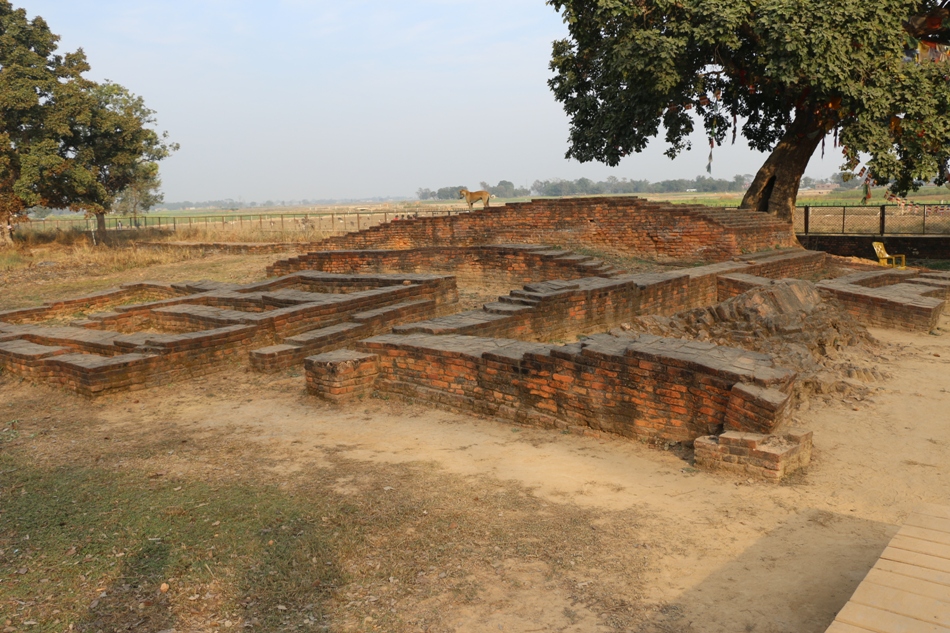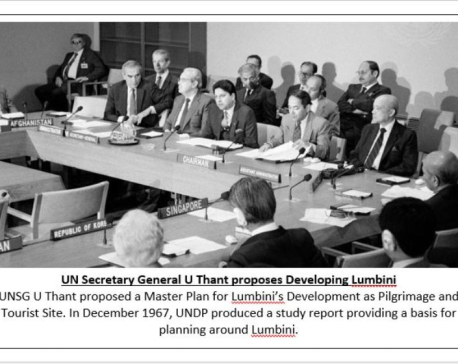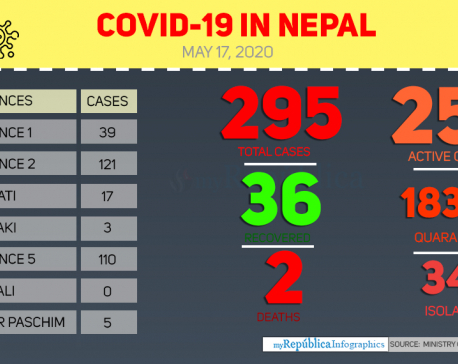
OR
When will Tilaurakot be included in the list of World Heritage Sites?
Published On: January 12, 2021 08:15 AM NPT By: Vidhu Prakash Kayastha

Government of Nepal made a submission on May 23, 1996 to include Tilaurakot in the list of UNESCO World Heritage Sites. A quarter century later it is yet to be included in the list.
Tilaurakot is waiting to be nominated in the list of UNESCO World Heritage Sites for a quarter century since it has been tentatively listed in the year 1996. A quarter century is wastefully a long period to keep a prominent archeological site in a pipeline. Tilaurakot, the palace of King Shuddhodan, where his son Prince Siddharth Gautam spent 29 years of his life, is undoubtedly a steppingstone of the pathway to enlightenment. Prince Sidharth Gautam is now known by the entire world as Gautam Buddha.
Nepal is known for its tremendous natural and cultural heritages. Yet, only 10 heritage sites of Nepal have been included so far in the UNESCO World Heritage Sites. Sagarmatha National Park and Chitwan National Park are the two natural heritage sites that have been included in UNESCO list in the year 1979 and 1984 respectively. Similarly, several cultural heritage sites of the Kathmandu Valley and Lumbini were also recognized as tangible cultural heritage sites in the UNESCO list. There are 15 tangible heritages that have been kept in the pipeline—six sites since 1996 and other nine sites since 2012. Ironically, not even a single tangible heritage of Nepal has been included so far in the UNESCO list, not even in the tentative list.
The government of Nepal made a submission on May 23, 1996 to include Tilaurakot in the list of UNESCO World Heritage Sites. It is well known that Siddhartha Gautam renounced his comfortable royal privileges and left the palace to begin his quest for peace and truth. Much has been studied since Tilaurakot was discovered by Purna Chandra Mukherji, an Indian archeologist, in 1899. It is believed that Mukharji traced the historical site taking the travelogues of two Chinese pilgrims into consideration. The Chinese monks, Faxian and Xuanzang, visited Tilaurakot in the 3rd and 6th centuries AD respectively.
Experts have discovered the ruins and remains of monuments, sculptures and ponds that established the evidences to prove the place was the capital of Shakya Kingdom and hometown of Lord Buddha. Fresh excavations have been carried out in recent times as well in order to pave the way for further studies on the archeological site.
During the series of excavations that took place from time to time, several items and structures have been unearthed, which the archeologists have identified as integral parts of the Tilaurakot palace. The main section of the palace has been traced with a rectangular fortified area with a length and breadth stretched to 1600 ft by 1000 ft, surrounded by 10 ft to 12 ft walls.
Four gates have been discovered along the fortification walls in each cardinal direction. The eastern gate is the most important one from where the Buddha is said to have stepped out for his quest of truth. The gate is known as 'Mahaviniskramana Dwara' or 'Mangal Dwara'.
A horse shelter built for the Buddha’s horse named by Kanthaka was identified nearly 100 meters east of the gate. It is believed that the Buddha left the palace riding his horse Kanthaka on the way to his path of renunciation. The shelter is known as Kanthaka Stupa.
It is believed that there were many ponds in the premises of the Tilaurakot palace. One of the ponds is still in existence in the northeastern side of the fort.
The Chinese pilgrims have mentioned about the Samai temple in the fort, where ancient sculptures were found in the fragmented state.
The archeologists have also traced a metal workshop used to make weapons and agriculture tools and minting of coins. The metal workshop strongly established the evidence that the site was undoubtedly the capital city of Shakyas.
Ancient roads have also been unearthed in the vicinity. The construction of the ancient road dates back from 7th– 6th century BC to 2nd century AD.
It has already been a quarter century since Tilaurakot, the archaeological remains of ancient Shakya Kingdom, was included in the tentative list of UNESCO World Heritage Sites. Five other sites submitted for nominations along with Tilaurakot by the government of Nepal to UNESCO on 23 May 23, 1996 include 1) Ramagrama, the relic stupa of Lord Buddha, 2) Khokana, the vernacular village and its mustard-oil seed industrial heritage, 3) cave architecture of Muktinath Valley of Mustang, 4) the early medieval architectural complex of Panauti and 5) the medieval palace complex of Gorkha.
It is high time for the government of Nepal, conservationists and the civil society to come together to do the needful to get these sites of historical and archeological importance nominated in the full-fledged list of UNESCO World Heritage Sites.
According to Sanu Raja Shakya, the newly appointed Member-Secretary of the Lumbini Development Trust, efforts have been escalated for full-fledged nomination of Tilaurakot in the World Heritage site. Similarly, Kiran Singh, Mayor of the Kapilvastu Municipality, has expressed his commitment to approach the concerned authorities for the processing of the nomination at earliest.
No further delay should be made to go through the nominations process to establish a due place for Tilaurakot, which is undoubtedly a key to enlightenment that Lord Buddha has spread for the welfare of entire humanity.
You May Like This

UN's long standing connection to the development of Lumbini--the birth place of Gautam Buddha
KATHMANDU, Oct 28: UN Secretary-General Antonio Guterres is arriving in Kathmandu on a four-day official visit to Nepal, beginning from... Read More...
_20201014060614.jpg)
Nepal abstains from voting as UNHRC adopts resolution against Sri Lanka's human rights record
KATHMANDU, March 23: Nepal has chosen to abstain from voting in the United Nations Human Rights Council on a resolution... Read More...

Health ministry confirms three new COVID-19 cases, number of total cases reaches 295
KATHMANDU, May 17: Nepal reported three new cases of COVID-19 on Sunday evening, taking the national tally to 295. ... Read More...



Just In
- World Malaria Day: Foreign returnees more susceptible to the vector-borne disease
- MoEST seeks EC’s help in identifying teachers linked to political parties
- 70 community and national forests affected by fire in Parbat till Wednesday
- NEPSE loses 3.24 points, while daily turnover inclines to Rs 2.36 billion
- Pak Embassy awards scholarships to 180 Nepali students
- President Paudel approves mobilization of army personnel for by-elections security
- Bhajang and Ilam by-elections: 69 polling stations classified as ‘highly sensitive’
- Karnali CM Kandel secures vote of confidence

















Leave A Comment